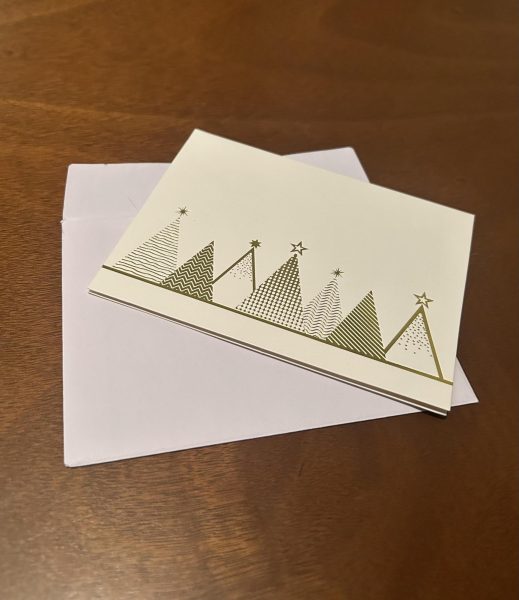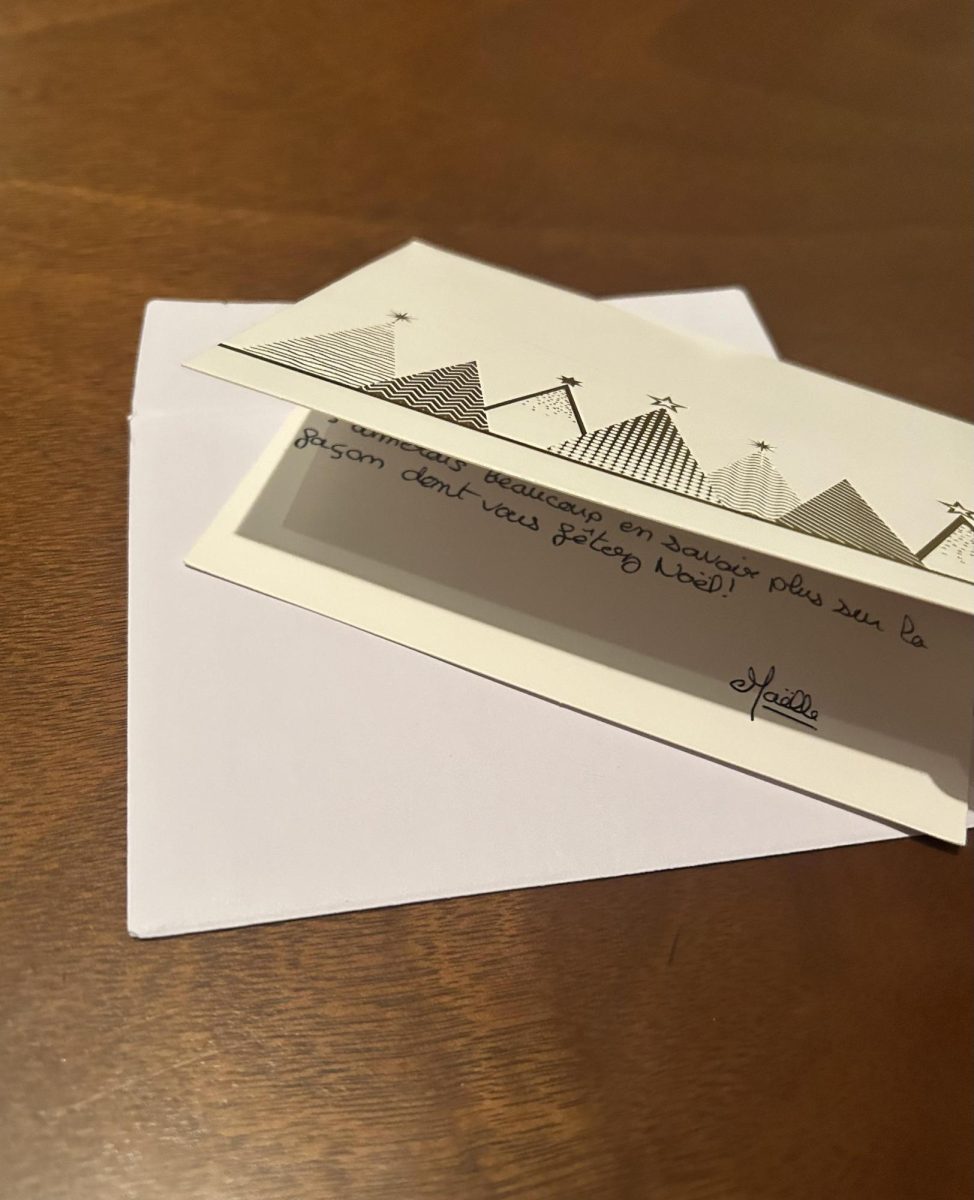Ludlow High School offers three foreign language classes: Spanish, Portuguese, and French. Many students partake in these courses because they’re great opportunities for personal growth, an additional way for students to expand their learning, and are great for college. These classes not only educate children on the language they’re learning but the country and culture associated with it as well.
But language can be learned in various ways outside of the traditional classroom methods. Madame Cook, a French teacher at Ludlow High, was met with an opportunity to get her students in touch with native French speakers. She decided to take it.
Over the summer, a former student of Madame Tammy Cook’s (who is now using his learned French at a university) reached out and proposed an idea. He had been told about a teacher located in France who was interested in setting up an exchange of letters between American and French students. This would allow both sides to further cultivate their knowledge of their target language.
Madame Cook asked her students what they thought of this idea, and while many were nervous or confused, the consensus was positive. Therefore, she decided to accept the offer and move forward.
The students wrote introductions, which they filmed along with a tour of Ludlow High. This tour showcased some of the relevant locations in our school (the library, gymnasium, cafeteria, etc.,) and described what makes it unique.
Afterward, the French classroom replied with their own introductions. Madame Cook and her new long-distance friend then paired each American student with a French student whom they believed best matched the other’s personality. At last, the communication could begin.
Madame Cook said she believed many students were “pleasantly surprised” at the exchanges: “I’m hoping everyone involved ultimately comes away with a positively changed perspective on the value of learning another language, and how it enables them to have a far deeper connection with someone from far away.” The students began sending their letters, going further into detail about their personalities and day-to-day lives, as well as learning more about their pen-pals. They were granted the freedom to discuss any topic of their choosing. Linda Faria, a French student, told me that, “When I met my pen-pal, I immediately felt a connection. We got to know each other and our differences. I can’t wait to learn more about them and their culture.”
These letters were written in each class’s fluent language, allowing them to practice their interpreting skills. That means that I’m writing in English, while my pen pal corresponds in French. This will eventually be reversed, allowing the students to refine their writing skills. In this way, we can become more comfortable with our pen pals before we attempt to write them a letter in French, which will most likely be chock full of grammatical errors.
Writing to students fluent in their target language has many advantages that it would be difficult to obtain otherwise. It gives students direct involvement with their area of study. Experiencing how French teenagers talk and interact in real life is something that can’t be gained without travel. It teaches students French slang and lingo which can’t be found in a textbook, as well as abbreviations and common phrases. This can take their knowledge of French from stiff and confined, to more natural and instinctive.
This chain of letters between students has also provided them with greater insight into the way the other country lives.
Linda Faria explained “I am thankful to our teachers for giving us the liberty to just blab about anything and everything without having to worry about formats and formality. So far we have covered many subjects.”
Students could discuss virtually any topic under the sun, such as interests and hobbies, school, home life, food, and travel. In doing so, students were able to better grasp other cultures. It helped them to make connections between the target culture and their own, and allowed them to discover things they may not have otherwise known.
For example, my pen pal and I have discussed the differences between methods of transportation. Cars are one of the most common ways of getting around in American towns, but in France that’s not necessarily the case. Their transportation is both more extensive and reliable. We’ve also gone in-depth into holidays, considering differences in traditions and other ways of celebrating.
My pen-pal told me about the “célébrations ou des fêtes.” In English, this simply translates to “celebrations or parties.” She then went on to discuss how “on peut aller à des bals en se déguisant en père Noël.” This means people can go to parties dressed as Santa Claus, something I found both interesting and amusing!
A beautiful aspect of these letters is that they create an authentic relationship with someone far away, who in many ways is different. Not only are students building their knowledge, but they’re building a friendships. This makes it all the more personal and drives students to become more engaged in their learning.
Many of these letters have been typed, but a fair amount have also been handwritten. Madame Cook’s class received personalized Christmas cards just before break. Each student entered the room in the morning to find them on their desk, a pleasant surprise! This personalized element added to the whole exchange.
This letter exchange is a wonderful opportunity and something that (to my knowledge) hasn’t been done before at our school. Madame Cook expressed her hope that “These letters (and cards and videos) will help my students have a more authentic experience with the French language and culture, and know how rich an experience it is to be able to connect with someone from another culture who is their age.”



Linda • Dec 21, 2023 at 12:16 pm
I love it Eva, great writer!!!! ??
Linda • Dec 21, 2023 at 12:16 pm
I love it Eva, great writer!!!! ??